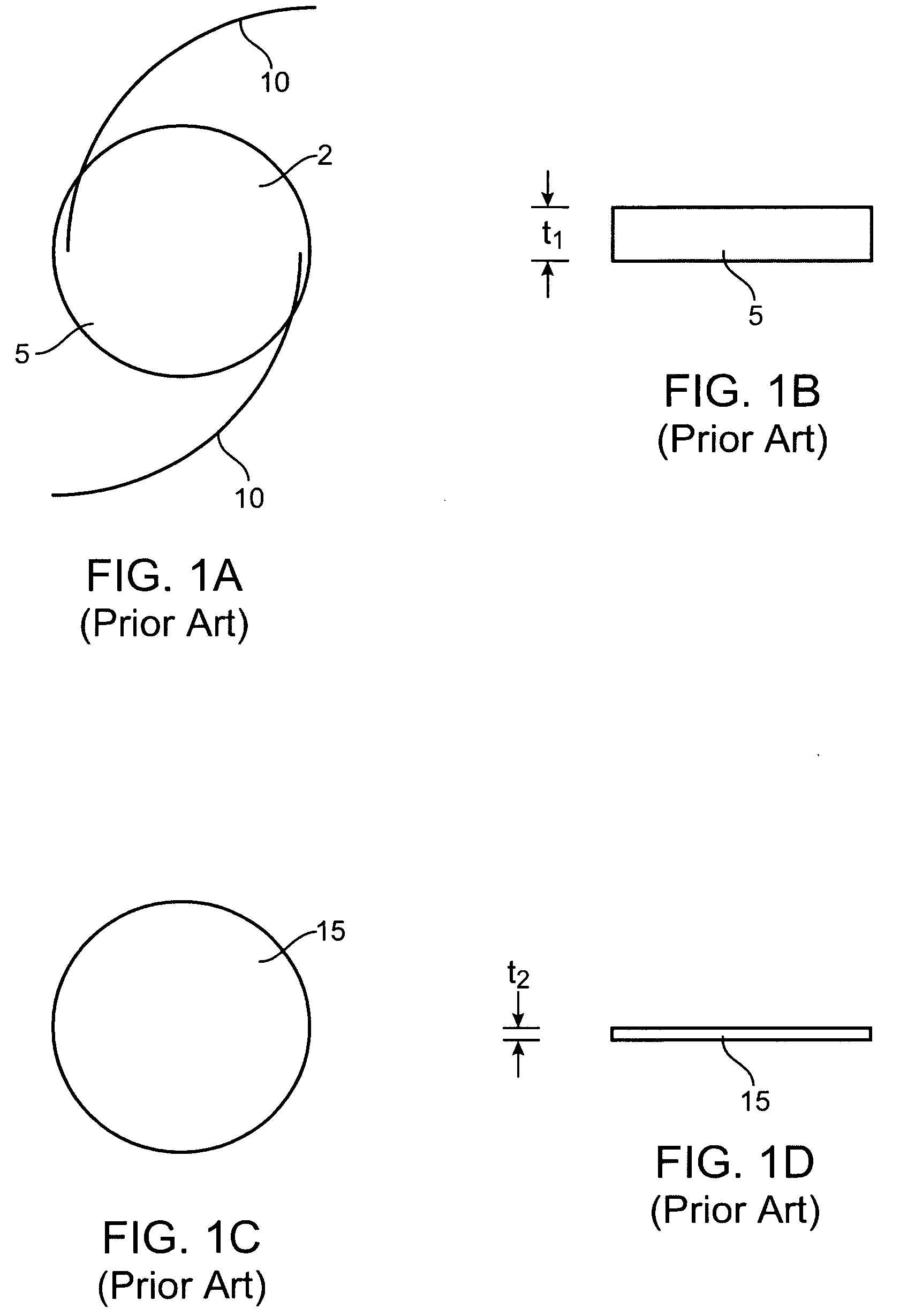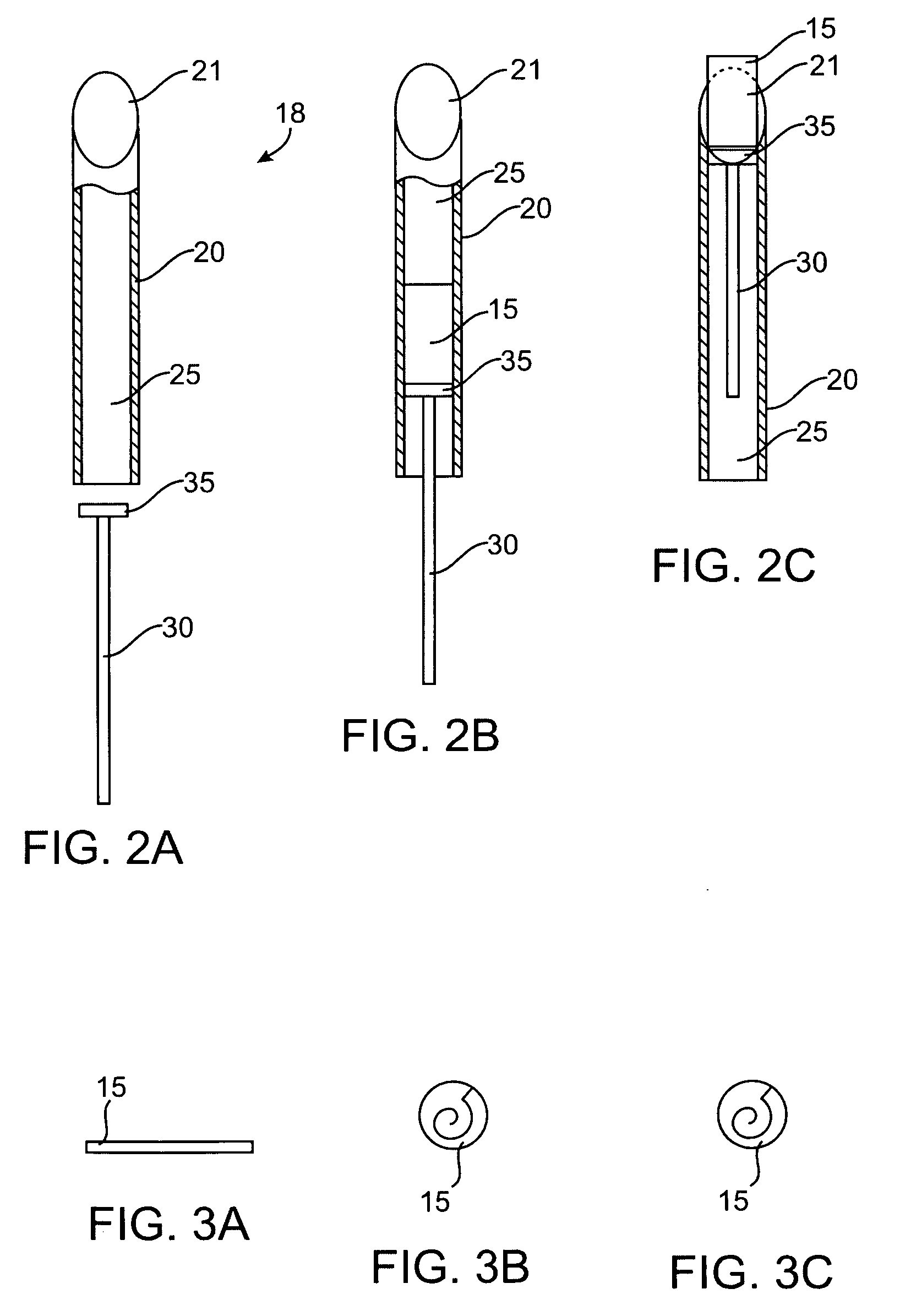Corneal implants and methods and systems for placement
a technology of corneal implants and corneal stents, applied in the field of corneal implants, can solve the problems of not being able to tolerate surgery lens implants, not being designed to be biocompatible with the cornea, and not being able to practically use small incision cataract surgery lenses within the corneal pocket. , to achieve the effect of reducing the size or width, and increasing the deformation
- Summary
- Abstract
- Description
- Claims
- Application Information
AI Technical Summary
Benefits of technology
Problems solved by technology
Method used
Image
Examples
Embodiment Construction
[0034]FIG. 1A shows a top view of a cataract surgery lens implant 2. A round optic 5 of the implant 2 has haptics 10 which extend from the periphery of the optic. The haptics 10 are used to help the optic center and fixate within the capsular bag. FIG. 1B shows a side view of a cataract surgery lens implant optic 5. Note that the thickness t1 of the optic 5 is typically 1 mm or more and is substantially greater than the 0.5 to 0.6 mm thickness of the human cornea. The thickness of the optic 5 makes it inappropriate for use as a corneal lens implant. FIG. 1C shows a top view of a corneal implant 15. Note there are no haptics on the corneal implant. FIG. 1D shows a side view of corneal implant 15. Note that the thickness t2 is substantially less than cataract surgery lens implant 5. The thickness t2 of corneal implant 15 would in general be less than the thickness of the human cornea.
[0035]FIG. 2A shows a corneal implant delivery system 18 in partial section. A hollow member 20 havin...
PUM
 Login to View More
Login to View More Abstract
Description
Claims
Application Information
 Login to View More
Login to View More - R&D
- Intellectual Property
- Life Sciences
- Materials
- Tech Scout
- Unparalleled Data Quality
- Higher Quality Content
- 60% Fewer Hallucinations
Browse by: Latest US Patents, China's latest patents, Technical Efficacy Thesaurus, Application Domain, Technology Topic, Popular Technical Reports.
© 2025 PatSnap. All rights reserved.Legal|Privacy policy|Modern Slavery Act Transparency Statement|Sitemap|About US| Contact US: help@patsnap.com



